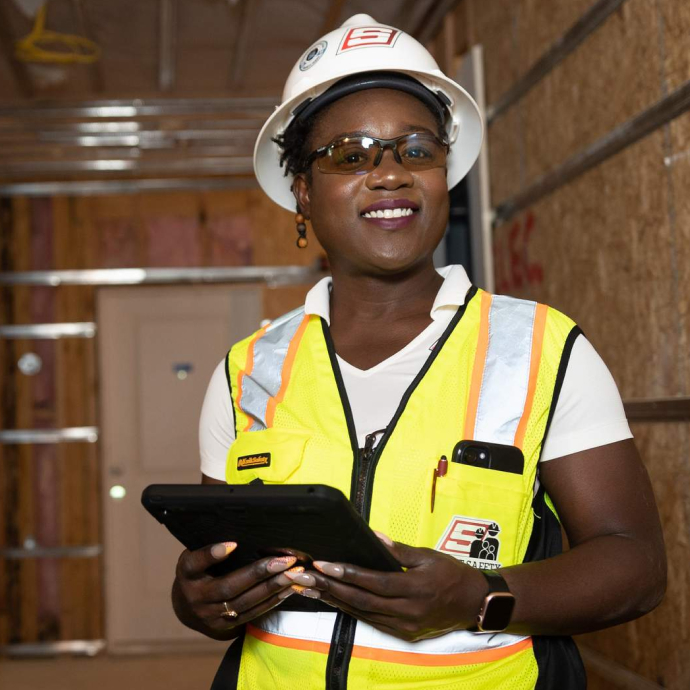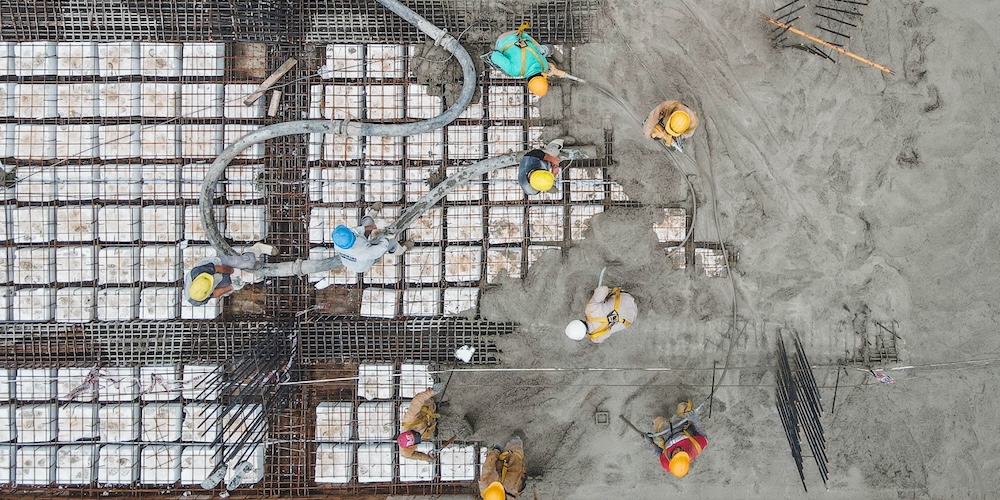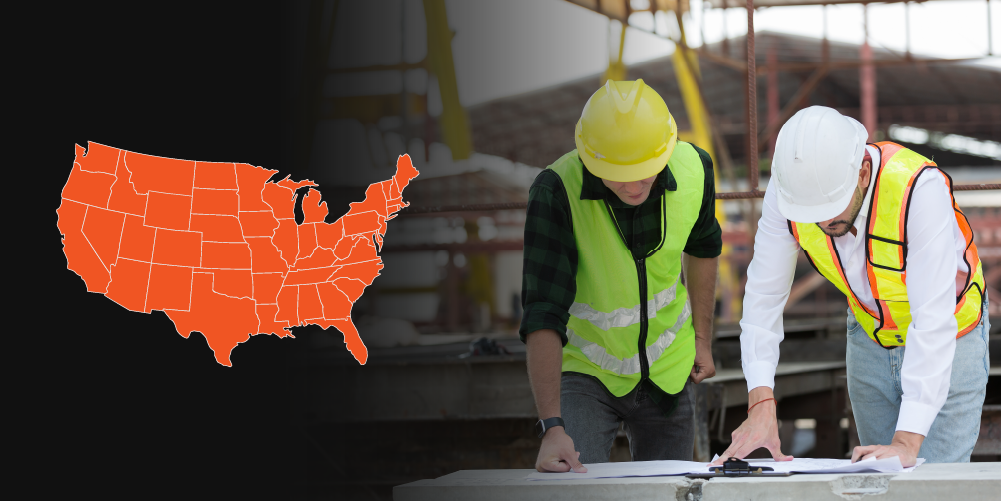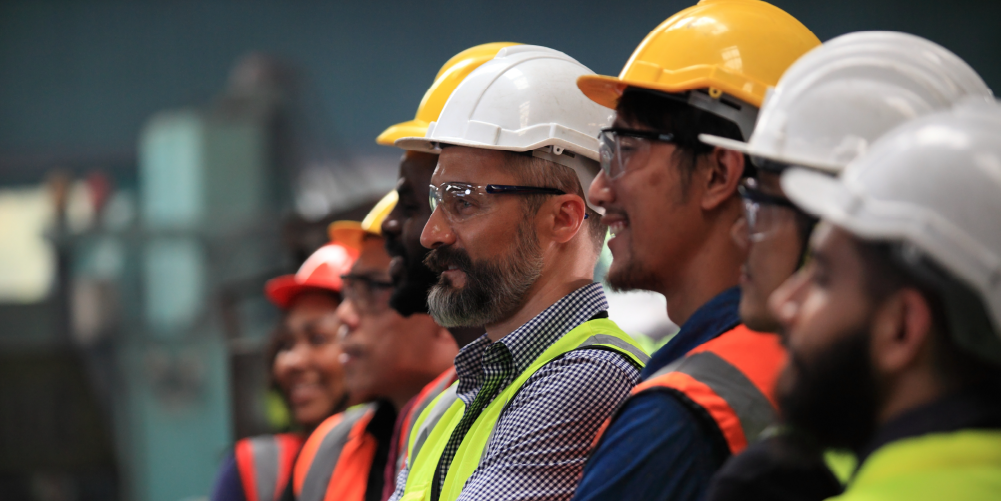— 10 min read
8 Tips for Managing Multiple Construction Projects
Last Updated Mar 13, 2025
Last Updated Mar 13, 2025

By its nature, construction work is a juggling act, with project managers and general contractors (GC) constantly adapting to changing conditions, planning to make sure there are enough materials and workers, and communicating with project stakeholders and site leaders to ensure things are on track.
For a project manager who has their hands full with more than one construction project, like renovations on several residential properties, figuring out how to tackle coordination across sites is like trying to solve a big puzzle.
In this article, we’ll explore some of the key challenges in overseeing multiple projects — and suggest some ways to make the process easier.
Table of contents
1. Prioritize projects.
One way to prioritize projects is based on their value. In general, the larger the project, the larger the investment in the cost of getting it done. For a residential project that relies on rent to generate revenue, project managers should work with GCs to hire more high-quality skilled laborers. Having more onsite workers devoted to quickly and efficiently getting the project done can reduce financial bleedout for the owner and reduce the risk of rework.
Secondly, project managers may consider prioritizing high-volume projects to get them turned over as soon as possible. For example, large-scale residential developments may involve the construction or renovation of hundreds of units, sometimes with residents coexisting with crew at the jobsite. These projects might need closer monitoring due to increased safety requirements and possible tenant outreach to get the project completed.
Projects should also be prioritized based on their impact, particularly concerning public utilities in residential buildings. For example, if a residential building where essential services like gas or heating are compromised, project managers and owners need to address these issues as quickly as possible. It can be a race against time: once utilities are shut off, getting them turned back on can be a complex and multi-step process involving the city or local municipality as well as the utility company, potentially leading to project delays and impacting timelines.
2. Communicate clearly.
Staying organized is essential for any construction project, and becomes even more so when working across several at the same time. To be organized as a PM means to be in near-constant communication with stakeholders at every level.
On the jobsite, the first step toward communicating effectively is establishing clear channels of information. This involves setting up organized communication systems to ensure that any and all important knowledge reaches the necessary stakeholders.
By establishing clear channels, such as a regular cadence of weekly or biweekly meetings, email chains, or project management software—and making sure everyone understands how to use them—the PM can facilitate effective communication and ensure that everyone is kept informed about project progress, challenges, and milestones.
Still, communication, especially on large projects, can end up being a lot like a game of telephone. One way of preparing for this is by establishing clear points of contact within the hierarchy of the construction team, so that everyone knows who they can take their questions to. This can help streamline communication, prevent delays from miscommunications, and even catch problems early—before they even make it up the chain to the project manager.
Construction is an incredibly diverse field, with many languages spoken on the jobsite. It’s immensely helpful for a project manager and GC to have some cultural competency with folks working on the project, and to go out of their way to make sure that every crew member understands their task.
Beyond the limitations of language, it’s important to understand that every crew sets its own norms and culture for the workplace, and it’s the site leaders’ responsibility to make sure that everyone is cohesive and focused enough to complete their tasks.
3. Assemble the right team.
Putting together the perfect team for a construction project is crucial. Each team member should know precisely what they're responsible for and be prepared to take ownership of their actions. And bringing the wrong crew members to the job can have devastating effects on morale and job performance.
Beyond their qualifications, the best team members are energetic, curious, and hungry to learn new skills and tackle new challenges head-on. When hiring project managers (PMs) or assistant project managers (APMs), it’s important to seek out people who are proactive. Many crew members can point out potential problems up the chain of command — but the best of them are self-starters who will also bring potential solutions, and are willing to jump in and fix an issue with the right solution before it gets any bigger.
In terms of managing a large number of workers, it’s crucial to make sure everyone on the team understands the big picture and how their individual tasks contribute to the larger project goals and timeline. Communicating the vision and timeline to crew, and taking the time to appear regularly at each jobsite, can make a huge difference in overall motivation and mood. It’s also a good idea to set the expectation early for how often GCs and superintendents can expect to see the PMs on site.
4. Streamline project documentation and reporting.
Managing several construction sites at once means reporting on and keeping track of a bunch of different worksites all at the same time. One way to keep up with the massive amount of data and information coming from all of these places is to use project management software to its fullest extent, including tracking Requests for Information (RFIs), logging submittals for materials, and keeping other necessary documentation.
Though it might seem like a hassle to keep organized, having a centralized and standardized hub and filing system for information across all worksites can make a project manager’s job much easier in the long run. Misplacing key documents and missing critical changes to the build can cause delays and waste valuable time. The PM should also regularly review and update their documents to make sure they’re accurate.
Free Class: Basics of RFIs
Learn the key principles of RFIs from the pros and earn continuing education credits from AIA.

5. Stay on top of risks.
When managing a portfolio of construction projects, there’s more risk that project managers must stay on top of. Aside from keeping the schedule on track and the budget balanced, there are additional factors that come into play.
Preserve relationships.
Construction is an industry of connections like any other, and one bad connection can cause procedural pain points for the long haul. A PM must make sure their whole team, including the general contractor, represents themselves professionally both on and off the project.
Let’s revisit the apartment building renovation example. It is the PM’s responsibility to establish an amicable relationship with tenants that occupy the building. It’s important to ensure construction noise is kept to a minimum, construction areas are organized and free of hazards and workers are respectful of the community.
If residents of the surrounding area feel disrespected by the presence of the crew in their neighborhood, they might try to leverage their local government against it.
Expedite project turnover.
Prolonging high-investment projects can quickly become costly for owners. Project managers should assign their best teams to these projects, and stay on top of their progress in order to expedite project handover so the owner doesn’t incur additional costs.
The bottom line of managing risk is that it involves a lot of planning and acting with integrity. Safety and respect for all — from the owner to the construction crew to the neighbors — should not be compromised.
6. Administer resources.
The best way for a PM to figure out how to strategically deploy workers and materials across worksites is to collaborate with general contractors and other site leaders. Generally, these leaders have the most knowledge about procuring local subcontractors and materials and can assist with aligning these resources to streamline the builds in a PM portfolio.
Manage materials.
In terms of materials, it can be helpful for a PM to standardize what is used across worksites. From light switches to bathroom fixtures to molding on the doors. This can simplify the process when ordering additional materials, and also make it less confusing to track which materials have gone to which jobsite.
Once they arrive, though, storing the massive amount of materials required for a full portfolio of jobs can be tough. PMs should partner with vendors who are capable of storing materials onsite. This way, project managers can assist with coordinating JIT deliveries and prevent the need to house materials.
Allocate finances.
PMs should stay in regular communication with finance teams, especially when construction management software is not available. When working on a portfolio of projects from the same owner and rep, it may be possible to move funding allocated for one project to another, if necessary.
Communicating with stakeholders and getting these fund changes approved as early as possible can help sell them on the idea, and get approval faster for a shift in how money is allocated to maintain the project’s momentum.
7. Monitor progress and performance.
There are so many complex factors in large, multi-location construction projects that it can be tough to stay on top of goals and objectives. In order for a PM to responsibly report to stakeholders—not to mention have any peace about their ability to deliver on time—it’s incredibly important to track progress.
A good way to measure progress across any site is to track key performance indicators (KPIs). Using these metrics can help a PM figure out which sites are moving forward swiftly, and which need more attention to meet their deadlines.
Daily logs are a necessary useful tool for tracking day-to-day operations, especially across a portfolio of projects. Using construction management software to run reports on how the actual delivery schedule is lining up with the estimated schedule can be helpful in evaluating how close a GC is to their projected timeline.
Learn more about managing an efficient construction schedule.
It’s also important that a project manager visits worksites and sees progress with their own eyes. Not recording an accurate reflection of the scene on the ground can cause delays. For example, some projects require bank inspections before approving a draw request. If a project manager hasn't seen the site recently, and the reports sent to the bank have been misleading them about the progress of the work, a GC can fail the inspection and lose days fixing the reports for proper approval.
Making sure reports are accurate also starts with training. If onsite crew members don’t understand the importance of the tracking system, or don’t fully know how to use it, errors are more likely to occur.
8. Stay flexible and navigate challenges.
In all, multiple construction sites are too sprawling and complex for a PM to catch everything that can come up, and the risk is exponentially greater when working across many worksites. It’s always important to stay flexible and problem-solve as issues arise.
Understanding limits is necessary for a PM working across a vast portfolio. They cannot expect themselves to be everywhere at once. They have to trust the workers onsite. But conflict and trouble will often find their way into the work anyway. It’s important to understand that a PM helps set the tone and attitude for the entire group of workers—and should not be afraid of stopping the work if necessary to hash out conflict and get everyone back on track. Sometimes taking a break to breathe is what’s necessary to keep the work going.
And it’s always important, whether they’re managing ten or a thousand workers, to remind the entire construction crew that everyone is on the same team. Even when working across different sites, a workforce is strongest when its members understand that their individual role can only succeed if the whole group succeeds—and the more cooperative and harmonious they’re able to be with their fellow workers, the faster everyone can complete the job and bring their checks home to their families.
The best way to be successful across massive projects is to be good and accountable to the people performing the work. Creating a healthy work environment allows the PM to maintain and develop relationships at the same time, creating a sense of camaraderie that outlasts any challenges and can carry over into the next project.
Was this article helpful?
Thank you for your submission.
100%
0%
You voted that this article was . Was this a mistake? If so, change your vote here.
Scroll less, learn more about construction.
Subscribe to The Blueprint, Procore’s construction newsletter, to get content from industry experts delivered straight to your inbox.
By clicking this button, you agree to our Privacy Notice and Terms of Service.
Categories:
Tags:
Written by
Jonathan Casilli
Jonathan Casilli joined Procore in June 2022 as a Senior Strategic Project Consultant specializing in Project Management, Core, and Quality & Safety. Jonathan has 13 years of combined GC/Owners/Consulting experience in the construction industry. He has served in various positions as an Estimator, Project Manager, Owners Rep, Director of Construction and Founder in and around the NYC Metro area. He is currently based in Las Vegas.
View profileTrey Strange
26 articles
Trey Strange is a Peabody and Emmy-Award winning writer and producer based in Brooklyn, NY. Throughout his career, Trey has worked for the Huffington Post, Houston Chronicle, Out Magazine, Brooklyn Eagle, CNBC, INTO, and New York Magazine's Bedford + Bowery. He received his Masters in Journalism and Middle East studies from New York University, and Bachelors in the same subjects from the University of Houston.
View profileExplore more helpful resources

Construction Manager vs. Project Manager: Comparing Leadership Roles
Skillful oversight of construction projects allows companies to deliver to owners on time and within budget. Construction managers (CMs) and project managers (PMs) provide the necessary supervision to keep projects...

Mastering Construction Resource Management: Strategies for Success
Completing construction projects successfully requires the careful management of various resources: labor, materials, equipment, money, time and information. Since these resources are finite, allocating them wisely is crucial for minimizing...

Managing Construction Projects in Different States: A Contractor’s Guide to Working Across State Lines
For many general contractors, taking on work in a new state or region can offer transformative opportunities for building a thriving business and a respected reputation. But managing projects is...

Construction Teamwork: Build a Solid Foundation With the Right Team
Construction is an industry of collaboration — no one person completes any job on their own. It could easily be argued that the most important skill for anyone in this...